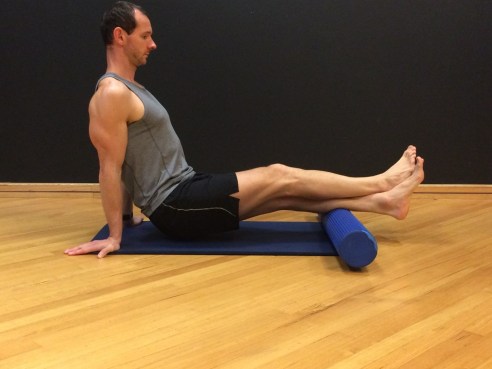SnowsBest fitness blogger Guillaume Tual explains what myofascial release is and why skiers and boarders need it.
Hands up if you’re pumped about the ski season! I bet a lot of you have started to hit the gym again, gone for crisp morning runs, doing sets of stairs. Well, good on you! But make sure that you incorporate some specific ski and snowboard exercises to train your muscles the right way.
Speaking of muscles, how is your flexibility? If you spend most of your time behind a desk or sitting in a vehicle, I would be right to say that you experience tightness in your lower back, glutes, hamstrings and calves. If you wear high heels all day, I would bet my ski pass that you have tight calves and often experience foot pain.
The thing is, there is a direct correlation between the base of your feet, your calves, hamstrings, your back and your forehead (superficial back line). Have you ever had a headache that disappeared after a foot massage (if not, try it next time)?
That’s because everything is connected inside our body via a 3D matrix of structural support called fascia. It allows us to move in multiple direction and transfers forces through the different parts of our body, hence very important in sports like skiing/snowboarding where energy loading and unloading is crucial. When dehydrated and static for too long, fascia becomes sticky and doesn’t allow itself to glide properly, which can also result in creating tightness in the surrounding muscles.
If you’ve ever seen a manual therapist, you would have heard of Myofascial Release Technique or MRT (myo= muscle). There are different ways to do MRT but the one you can do yourself is called Self Myofascial Release using a Foam Roller or a ball. But why do SMR you will ask?
When you put a full body wet suit on, it always feels bloody tight and you can’t move very freely but once the suit is wet (hydrated), movement seems easier. It’s the same thing with fascia and SMR will help rehydrate by changing gel to liquid and lengthen kinked fibres and also by convincing your nervous system to let you move farther.
Note that self-myofascial release causes an increase in short-term flexibility that lasts for over 10 minutes *.
So here are a few rules to remember when using a Foam Roller or a Ball.
- The more pressure you apply, the more deep tissue release you get. You can go soft or hard, it’s up to you. Both are good.
- When you find a sore spot, stay on it for 90sec and breathe deeply through your belly (not your chest).
- Start from the feet and work your way towards your heart.
- A softer Foam Roller is better and less painful. Spikey ball or tennis balls work really well in isolated spots.
- Relax and breathe through the discomfort.
PLANTAR FASCIA (FOOT) RELEASE WITH BALL (OR ROPE)
Stand barefoot on a ball and roll from your heel to the toe joints in linear and circle movements. You can also step onto a battle rope and walk sideways, rolling your feet in and out (this may hurt more)

CALVES WITH FOAM ROLLER
Sit on the floor with your legs in front of you supported by the foam roller. Push off from your hands to lift your butt off the floor and roll back and forth along your caves. Increase the pressure by putting one leg on top of the other. You can also roll the leg side to side.

HAMSTRINGS WITH FOAM ROLLER
This works better if you are sitting on a chair/box. Place the foam roller at the edge of your pelvis (origin of your hamies). Use your hands and other leg to roll the back of the straight leg and rotate side to side.

QUADRICEPS WITH FOAM ROLLER
Lay on your elbows and tummy with the foam roller under your thighs. Pull your body forward and back to bring the roller from the top of the knees to the base of your hips. Rotate your legs in and out. You can add more tension by bending the knees or putting one leg on top of the other.

GLUTE MAXIMUS/TFL FOR ITB RELEASE WITH FOAM ROLLER OR BALL
The Ilio Tibial Band (ITB) can be quite uncomfortable to roll so releasing the 2 muscles that attach to it tends to be more efficient.
For the Tensor Fasciae Latae (TFL), place the foam roller just below the outside of your front hipbone and roll about 20cm down.

For the Gluteus Maximus (the big buttock one), sit on the foam roller and cross your right ankle over your left knee. Bend your left leg up and bring your chest to your right knee. Lean slightly to the right and roll.

You can get a deeper release by using a ball on the same spots but it tends to be more painful.
These self myofascial release techniques will allow you to bend you ankles, knees and hips more freely since you’re likely to be in a semi squat position most of the day. It will also take the tension away from your lower back so you can be in top shape the day after. If you can’t take a small foam roller with you on holidays, at least take a tennis or massage ball (you’ll thank me for it!)
Check out more Fit2Ski tips, videos, photo galleries and more on our Fit2Ski page.
Visit Guillaume at his Altifit web page
































